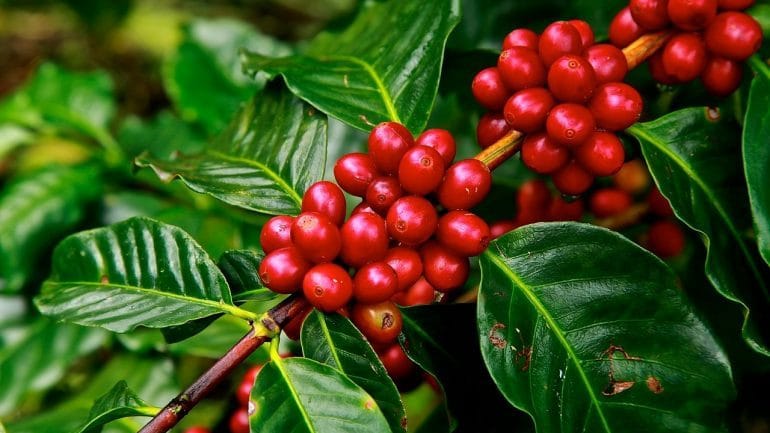33 Fascinating Coffee Statistics for Every Coffee Lover
written by / January 10, 2022
Many people can’t imagine starting their day without a cup of coffee in the morning. This popular beverage gives us a much-needed energy boost and helps us make it through the day. Although it’s a well-known fact that caffeine can interfere with our sleep, moderate coffee intake can also have some health benefits. According to some sources, this tasty drink can reduce the risk of Parkinson’s disease and prevent liver cancer. While more research is still needed to examine coffee’s effects, here we’ll focus on the numbers.
The Most Amazing Coffee Statistics
- 64% of American adults currently consume coffee every day.
- Americans drink about 400 million cups of coffee every day.
- Americans drink about 146 billion cups of coffee per year.
- 66% of women drink coffee every day, compared to 62% of men.
- 79% of Americans prepare coffee at home.
- About 35% of coffee consumers usually drink black coffee.
- 45% of US coffee consumers brew their coffee by a drip coffee maker.
- Robusta beans have a higher caffeine content than Arabica beans.
- In Finland, an average of 12 kg of coffee is consumed per person every year.
- About 110–120 million bags of coffee are produced in the world every year.
US Coffee Consumption Statistics

How many Americans drink coffee? Here, we will be looking at statistics related to coffee consumption in the United States.
1. 64% of American adults currently consume coffee every day.
(Reuters, NCA)
According to a study conducted by the NCA, this is the highest rate since 2012. In our infographic about bizarre sleep habits, you can see that some famous writers were also regular coffee drinkers.
2. An average American drinks 3.1 cups of coffee per day.
(E-Imports)
The FDA recommends that we keep our caffeine intake at 400 mg a day or less, which is equivalent to about 4 cups of coffee. Therefore, it looks like Americans stick to this recommendation, on average.
3. Americans drink about 400 million cups of coffee every day.
(E-Imports)
According to recent coffee drinking statistics, the US is among the leading consumers of coffee in the world.
4. Americans drink about 146 billion cups of coffee per year.
(Coffee-Statistics.com)
This statistic clearly shows just how obsessed Americans are with this tasty beverage. Still, when it comes to coffee consumption, they don’t even rank among the top ten countries in the world.
5. Americans consume 75% of all their caffeine in the form of coffee.
(Coffee-Statistics.com)
Besides coffee, other common sources of caffeine are tea, energy drinks, soda, and chocolate. For example, a milk chocolate bar can contain up to 50 mg of caffeine. Interestingly enough, several health benefits of coffee aren’t related to its caffeine content, but to the fact that coffee is also a great source of antioxidants.
6. The average coffee cup measures 9 ounces.
(HuffPost)
However, a typical cup of coffee in Japan is 200 milliliters (6.7 ounces), and in Canada, it’s 227 milliliters (7.6 ounces).
7. More than half of all coffee consumers would rather skip a shower in the morning than skip their coffee.
(HuffPost)
Also, about 49% of them would rather do without their mobile phone for a whole month than give up coffee.
Coffee Drinker Demographics
Who drinks coffee? In this section, we will be looking at the different types of people who consume coffee.
8. 66% of women drink coffee every day, compared to 62% of men.
(CreditDonkey)
Therefore, when it comes to the gender of coffee drinkers, the statistics indicate there’s no big difference between men and women.
9. The percentage of people who drink coffee is greater among workers with a higher income.
(CreditDonkey)
In particular, 66% of people with an income greater than $30,000 consume coffee, compared to 58% of workers who earn less than that amount.
10. 74% of Americans aged 55+ drink at least one cup of coffee every day.
(CreditDonkey)
If we look at coffee consumption by age, seniors are the greatest coffee consumers. Conversely, US adults aged 18–34 drink this beverage the least often.
Consumer Behavior
What are the common consumer trends among people who consume coffee? In this section, we will be taking a closer look at these trends.
11. 65% of US adults drink coffee with their breakfast.
(E-Imports)
30% of them drink coffee between meals, and 5% drink it with meals other than breakfast. Some studies point out that the best times for this energy-boosting drink are between 10 a.m. and 12 p.m., and then 2 p.m. and 5 p.m.
12. 79% of Americans prepare coffee at home.
(Reuters)
According to a survey conducted by the National Coffee Association (NCA), Americans tend to drink coffee at home. Only 36% of respondents said that they’d had a cup of coffee away from home the previous day.
13. About 35% of coffee consumers usually drink black coffee.
(E-Imports)
The remaining 65% prefer to sweeten this beverage or to add some cream.
14. 48% of millennials consume gourmet coffee.
(Reuters) (CreditDonkey)
Data collected by the NCA shows that younger coffee drinkers consume more gourmet coffee than other age groups. According to US coffee consumption statistics, 36% of people from this generation drink cappuccinos, lattes, and the like, and 22% of them like espresso.
15. Most women like drinking coffee because this ritual helps them relax.
(E-Imports)
On the other hand, men say that coffee improves their efficiency. Apparently, there’s a big difference among genders when it comes to their reasons for drinking coffee.
16. About 29% of US coffee consumers drink coffee to relax.
(Statista)
Why do most people drink coffee? According to the NCA’s survey results, almost a third of Americans who drink coffee enjoy this beverage because it helps them unwind.
17. 9% of US coffee drinkers order coffee through an app.
(Reuters)
The NCA’s survey shows that only a few Americans use apps to order coffee.
18. 45% of US coffee consumers brew their coffee by a drip coffee maker.
(Statista)
A survey conducted by the NCA revealed that 45% of their respondents used a drip coffee maker the day before. This coffee preparation method is followed by single-cup brewing systems.
19. About 13% of coffee drinkers in the US use espresso machines.
(Statista)
In the survey conducted by the NCA about coffee consumption in the US in 2019, about 12% of respondents said they’d used an espresso machine the previous day.
Coffee Plants

In this section, we will be focusing on the plants that coffee beans come from.
20. Robusta beans have a higher caffeine content than Arabica beans.
(Gourmet Coffee Zone)
Since Robusta varieties are normally used for making coffee blends for standard brewing, this type of coffee is stronger than espresso, which is typically made of Arabica beans. Usually, espresso coffee contains only a third of the caffeine content you’ll find in a brewed cup of joe.
21. The typical annual yield of a mature coffee plant is about 5 pounds of green coffee beans.
(Gourmet Coffee Zone)
It’s interesting that from 5 pounds of green coffee beans, we get less than one pound of beans after roasting, according to coffee statistics worldwide. Based on information from 2016, Brazil produced about 2.5 million metric tons of coffee beans.
22. A coffee plant can live up to 100 years.
(Gourmet Coffee Zone)
However, coffee plants live 40–50 years on average when they are properly cared for.
The Coffee Market
How big is the coffee market? Here, we will be discussing production, cost, and the business of coffee.
23. The average price of a cup of coffee in the US is $3.28.
(CreditDonkey)
Considering how much coffee Americans drink, we can conclude they spend a considerable amount of money on this beverage.
24. The annual coffee retail sales in the US are about $5.2 billion.
(Statista)
This piece of coffee industry statistics depicts consumer spending habits as well as the coffee market’s potential.
25. South America produced 81.5 million bags of coffee in 2018.
(Statista)
Considering that each bag weighs 60 kilograms, South America produced more than 5 million tons that year. This makes them the greatest coffee producer in the world.
26. Brazil exports 5.7 billion pounds of coffee every year.
(Telegraph)
This country is the largest coffee exporter in the world. Interestingly, Brazil produced about 80% of all the coffee in the world in the 1920s. Nowadays, according to the coffee stats, it supplies around a third of the world’s coffee.
27. Colombian mild Arabicas were the most expensive coffee per pound in 2017.
(Statista)
Arabica and Robusta are the most popular coffee varieties. Generally, Arabicas are more expensive than Robusta varieties.
Coffee Shop Statistics

Coffee is commonly consumed at coffee shops or purchased to-go from coffee shops. Here, we will be taking a closer look at the places that sell prepared coffee.
28. There are about 24,000 coffee shops in the US.
Considering this sector’s growth rate, this number is expected to double within the following years. Interestingly, Seattle has the largest number of coffee shops per 100,000 residents in the US.
29. On average, a coffee shop sells 230 cups of coffee per day.
Therefore, based on coffee shop sales statistics, its annual sales amount to about 84,000 cups of coffee on average.
30. Coffee shops have a 7% annual growth rate.
This growth rate makes coffee shops one of the fastest-growing segments of the restaurant industry.
31. Monaco has about 52 Starbucks branches per one million inhabitants.
According to statistics, Monaco is the leading country when it comes to the number of Starbucks branches per capita. The US comes second in this list.
Coffee Consumption Statistics: On a Worldwide Level
How popular is coffee throughout the world? In this section, we will be exploring how coffee is consumed worldwide.
32. In Finland, an average of 12 kg of coffee is consumed per person every year.
According to the statistics of coffee consumption by country, Finns are the world’s greatest coffee consumers. They are followed by Norway, Iceland, and Denmark. The US ranks 26th on this list.
33. About 110–120 million bags of coffee are produced in the world every year.
We already know that the largest coffee producer in the world is Brazil, according to coffee production statistics. What’s impressive is that it has held this position for over 150 years.
Conclusion
As you can see from our coffee consumption data, coffee is one of the most popular beverages both in the US and the world. Considering that about 40 million Americans suffer from chronic insomnia, which leads to sleep deprivation, it’s no wonder that so many people need an energy boost. Even people who don’t have sleep problems often drink this tasty beverage to get more energized and stay focussed. Moreover, drinking coffee isn’t always about its effects, but about a pleasant ritual that some find relaxing. However, like with everything else in life, moderation is key.
Hopefully, these interesting coffee statistics for 2022 will give you better insight into coffee consumption and the coffee market’s latest trends.








